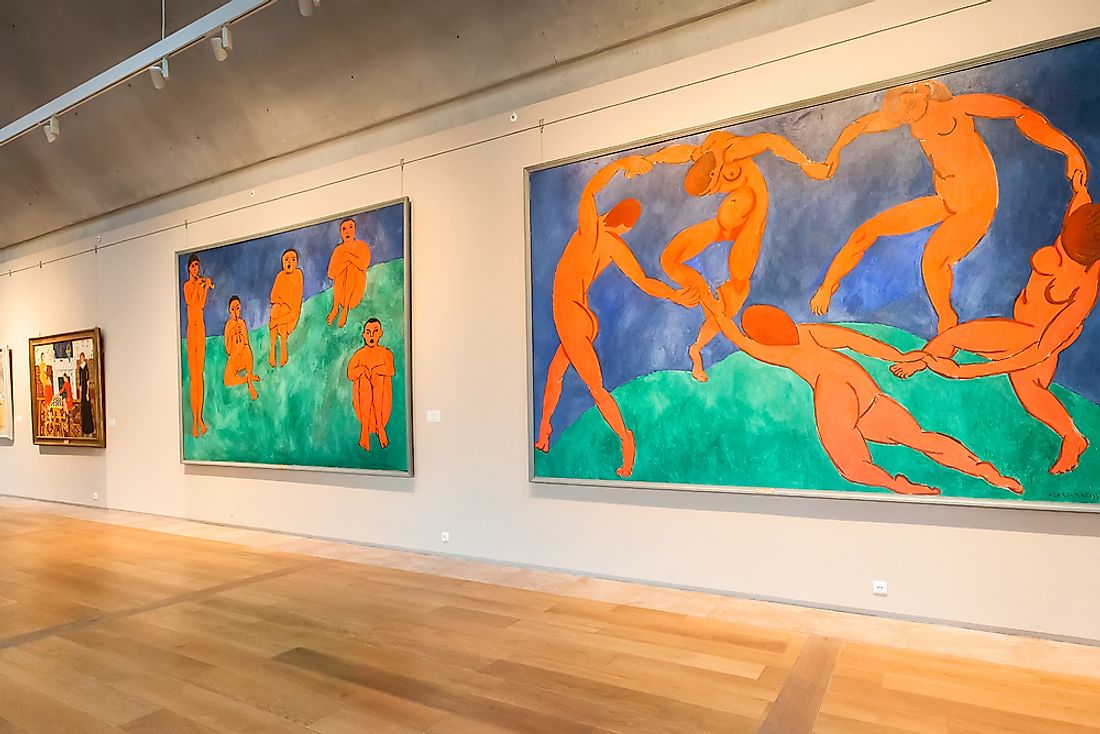Famous Artwork: Dance

Henri Matisse made two closely related paintings between 1909 and 1910 and named them Dance. The 1909 (initial) version acted as a guide to 1910 (second) version. The 1910 version of the Dance was pale and used less color and details and Matisse liked the painting that he named it "the overpowering climax of luminosity,” and featured it in Matisse's La Danse with Nasturtiums of 1912. Nelson Rockefeller later donated the painting to New York’s Museum of Modern Art. The 1910 version of Dance is large and included with a musical companion piece for Matisse’s friend Sergei Shchukin, a Russian art collector. This version, decorated and full of red color, hangs on Shchukin's staircase in Moscow until the 1917 October Revolution. The second dance painting depicts five people dancing nude in front of a green landscape, and blue sky and one of the dancers appear to be pregnant.
Henri Matisse’s Background
Henri-Émile-Benoît Matisse (1869-1954), was an incredibly talented French draughtsman, printmaker, and sculptor famous for his originality, fluidity, and use of colors. As an artist whose role in the revolution of visual arts during the early years of the 20th century was great, he often ranks with the likes of Pablo Picasso. Matisse was one of the radical artists who were not afraid of going against the norms of the society. This attribute together with his creativity, expressiveness, and imagination led him to be nicknamed the Fauve (wild beast) like cubic artists. Matisse studied law in Paris and worked as Le Cateau-Cambrésis’ court administrator. His painting journey officially kicked off in 1889 when he was recovering from an appendix condition, describing his new-found love for painting as "a kind of paradise," he abandoned law and became an artist to the disappointment of his father. After this discovery, he went back to school and studied art initially concentrating on painting landscapes and still life. What followed was further study of painting and traveling as he met and talked to various artists.
Details of the Final Version of Dance
The final version of the dance is rich in expression of emotions. After the picture’s completion, many people described it as a ritualistic, demonic, tribal, forbidding, or menacing art. The picture consists of five naked women dancing while holding hands in a circle. Breasts of three of the women are exposed while the other two only show their backsides, and seemingly, one of the women is pregnant. All the women have their heads bowed and their eyes are closed. Equally, the pregnant woman is physically well-built and looks tense. The green landscape seems compressed under the dancers’ weight, and the feet of three of the women touch the ground.
Interpretation of the Details of the Final Version of Dance
Matisse draws his inspiration from pagan folk dances that were ritualistic. The red, green, and blue represent the uniting of man’s heart, earth, and the heavens while expressing a person’s subliminal wisdom of involvement in the rhythms of nature and the heavens. The five figures show firm outlines with areas of deformation thus showing their inner stimulation of the all-consuming rhythm. The dancers’ energy sinks the earth as per Matisse’s thoughts.
Current Location of the Dance
The Dance is among the paintings, drawings, and sculptures in the State Hermitage Museum in St. Petersburg, Russia. However, the painting is usually available in the main exhibitions relating to contrasts between artistic movements around the world, after which, it is taken back to Russia. Everywhere the painting goes, it attracts a huge audience.











